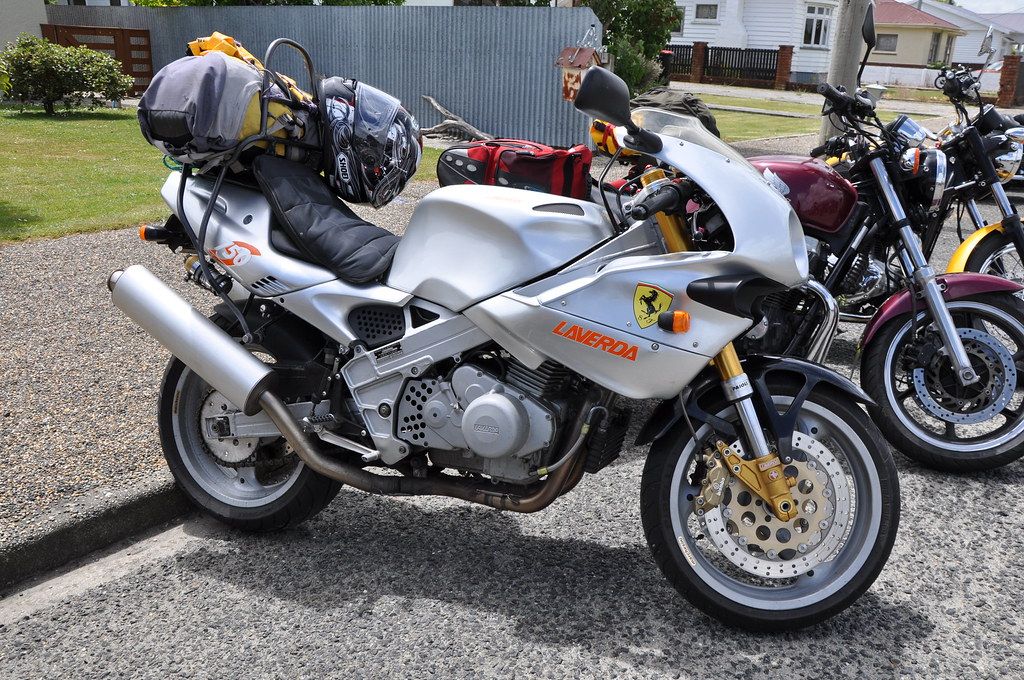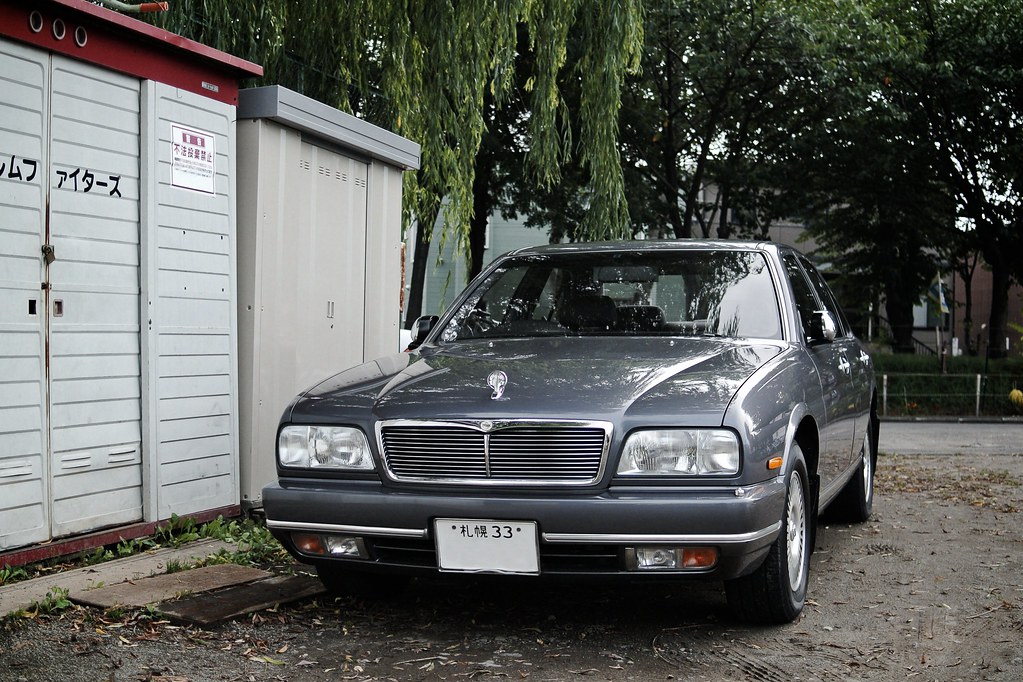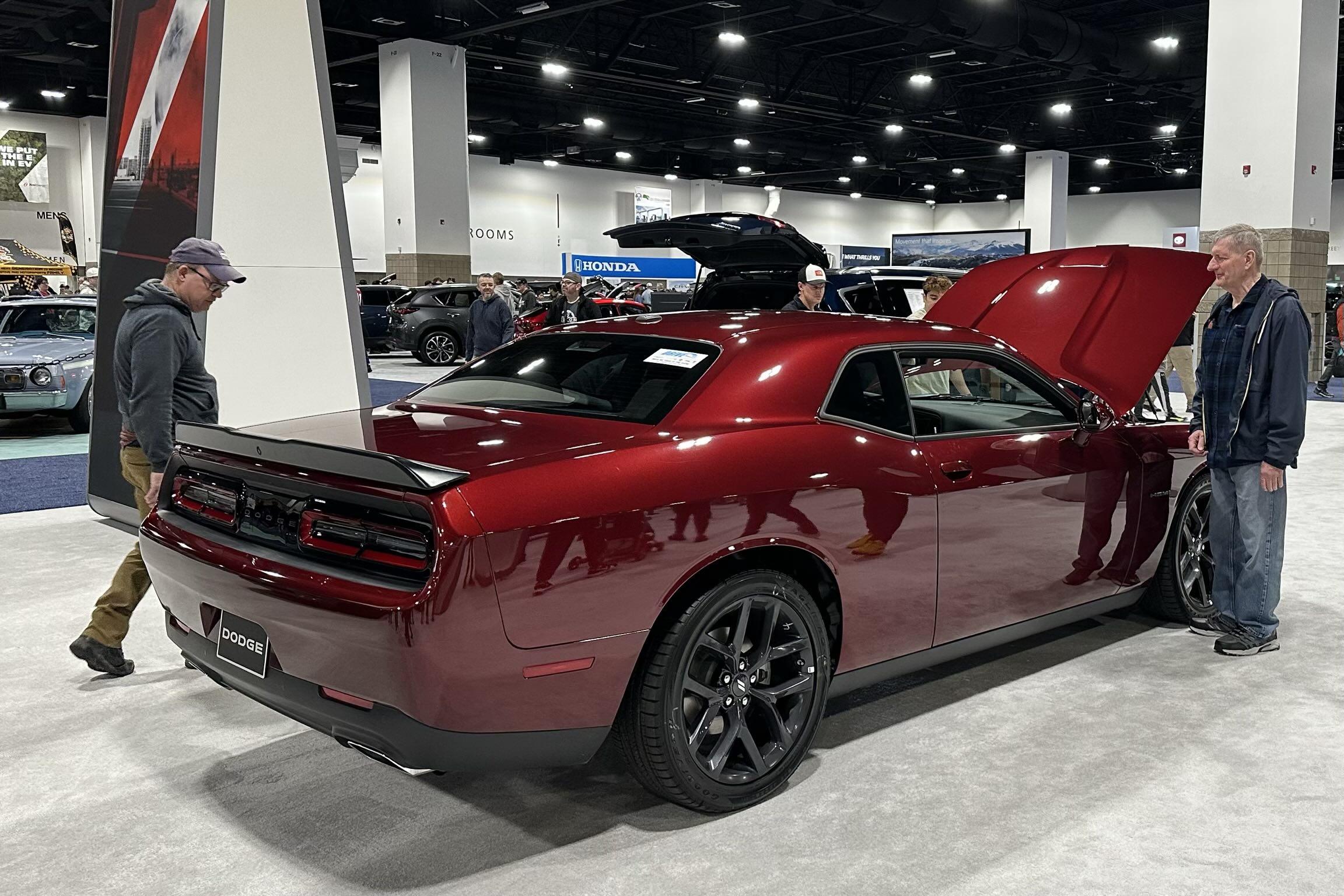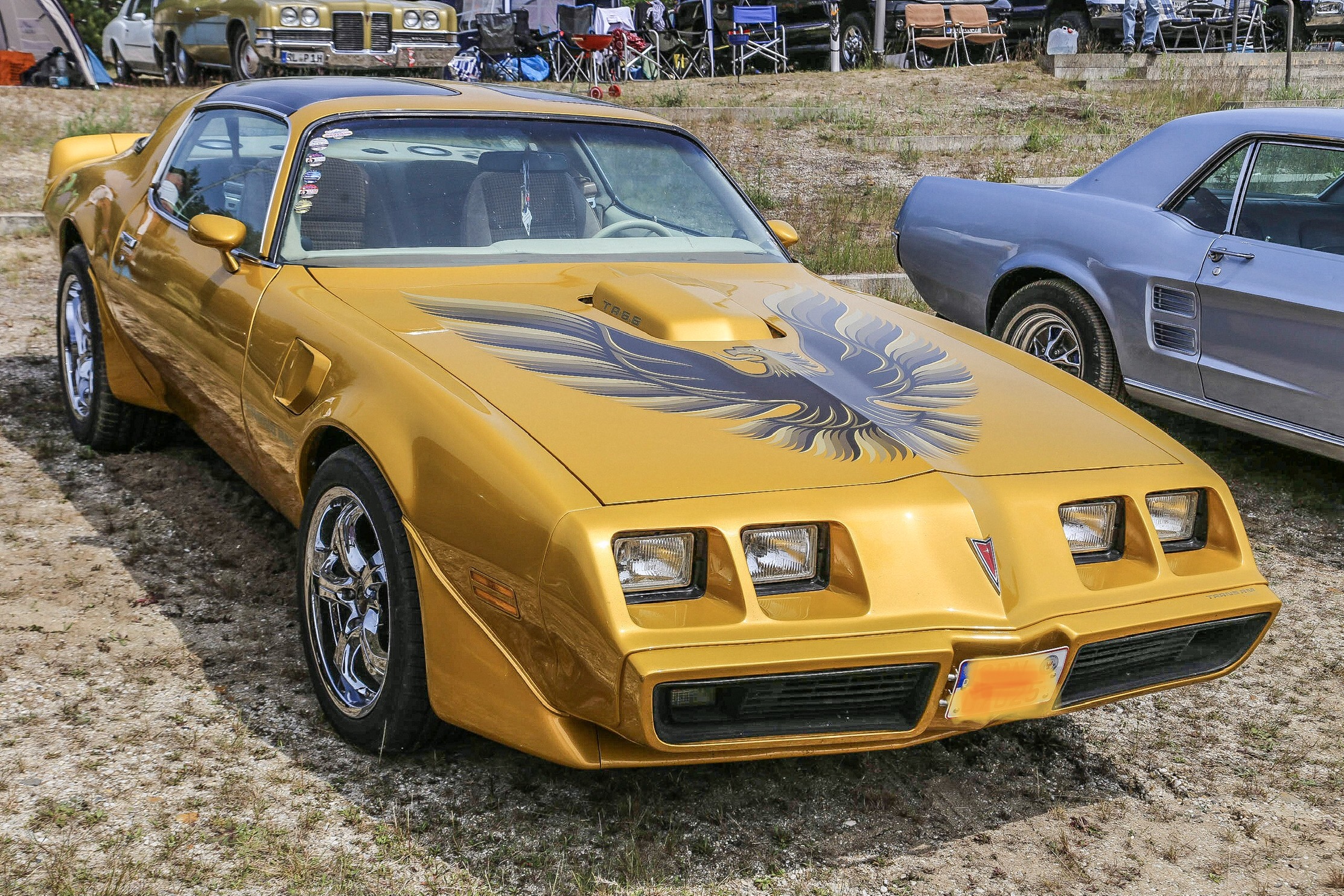
For fans of classic television and automotive history, few vehicles hold as iconic a status as the gold Pontiac Firebird driven by private detective Jim Rockford in the beloved series, “The Rockford Files.” From its debut in 1974 until its conclusion in 1980, this unassuming yet undeniably cool pony car became synonymous with its charmingly disheveled protagonist, navigating the sun-drenched streets of Malibu and beyond. It was more than just a prop; it was a character in its own right, a silent partner in countless investigations and thrilling pursuits.
Unlike its more flamboyant siblings, the performance-oriented Trans Ams that roared across screens in “Smokey and the Bandit” or transformed into KITT on “Knight Rider,” Rockford’s Firebird Esprit exuded a more grounded, relatable charm. It was a choice born not just of aesthetics, but of a deliberate intention to reflect the character’s everyman appeal and his somewhat precarious financial standing. This thoughtful selection, deeply influenced by the show’s star, James Garner, embedded the car’s identity firmly within the fabric of the series.
Our journey through the world of “The Rockford Files” Firebird will peel back the layers of its fascinating history. We’ll explore the unique blend of automotive passion and practical production demands that shaped its on-screen presence, trace its evolution through various model years, and even follow the intriguing path of a particular Firebird that once belonged to James Garner himself. Prepare to rediscover the stories behind this enduring automotive legend, a testament to the meticulous craftsmanship and the enduring appeal of one of television’s most memorable rides.

1. **The Iconic Gold Firebird Esprit: Choosing Rockford’s Signature Ride**When producers and star James Garner were deciding on Jim Rockford’s vehicular companion, the choice of a Pontiac Firebird was significant. The Firebird line was already making waves in popular culture, starring in various film and TV appearances throughout the 1970s and ’80s. However, the specific variant chosen for Rockford set his car apart from its more aggressively styled counterparts seen elsewhere.
Garner, with his deep understanding of cars and character, insisted on the Firebird Esprit. This was a deliberate departure from the high-performance Trans Am models, which, as he noted in his memoir *The Garner Files*, wouldn’t have fit Rockford’s persona. “Well, he would’ve liked [a Trans Am]; it’s much sexier,” Garner wrote, “but I don’t think he could afford it.”
This decision underscored Rockford’s character as a budget-conscious private investigator, a man who might admire flash but ultimately needed something reliable and unpretentious for his daily grind. The Esprit, while still a stylish pony car, projected a more understated image, perfectly aligning with a detective who operated from a house trailer on the beach and often found himself in tight financial spots. It was a car that could blend in, rather than stand out, a crucial attribute for someone flying under the radar.
The choice of the Esprit, therefore, wasn’t merely a casual one; it was a foundational element in crafting Jim Rockford’s identity. It demonstrated a nuanced approach to character development, where even the vehicle played a vital role in conveying the hero’s circumstances and personality. This attention to detail helped solidify the Firebird’s place as an integral part of the show’s enduring appeal, making it instantly recognizable and deeply intertwined with Rockford’s world.
Car Model Information: 1983 Pontiac Firebird Trans Am 2D Coupe
Name: Pontiac Firebird
Caption: The second, third, and fourth generations of,the Pontiac Firebird Trans Am
Manufacturer: Pontiac (automobile)
Production: February 23, 1967 – August 30, 2002
ModelYears: 1967 – 2002
Class: Pony car,Muscle car
Platform: GM F platform
Related: Chevrolet Camaro
Layout: Front engine, rear-wheel-drive layout
Categories: 1970s cars, 1980s cars, 1990s cars, 2000s cars, All articles with dead external links
Summary: The Pontiac Firebird is an American automobile built and produced by Pontiac from the 1967 to 2002 model years. Designed as a pony car to compete with the Ford Mustang, it was introduced on February 23, 1967, five months after GM’s Chevrolet division’s platform-sharing Camaro. This also coincided with the release of the 1967 Mercury Cougar, Ford’s upscale, platform-sharing version of the Mustang.
The name “Firebird” was also previously used by GM for the General Motors Firebird series of concept cars in the 1950s.
Get more information about: Pontiac Firebird
Buying a high-performing used car >>>
Brand: Pontiac Model: Firebird
Price: $22,991 Mileage: 38,257 mi.

2. **James Garner: The Actor, The Driver, The Car Guy**James Garner was far more than just the engaging actor who brought Jim Rockford to life; he was a serious car enthusiast and a highly capable stunt driver. His passion for automobiles was evident long before “The Rockford Files,” beginning with a revived childhood love for all things automotive after starring in the 1966 movie “Grand Prix.” This experience ignited a lifelong commitment to motorsports and car culture that profoundly influenced his work.
Garner’s driving prowess was not just for the cameras; he competed actively. In 1969, he drove a four-wheel drive Oldsmobile 442 to an impressive second-place class finish at the Mexican 100, an endurance race now famously known as the Baja 1000. Further showcasing his dedication to racing, he co-founded a sportscar racing team that secured a second-place finish at the prestigious 24 Hours of Daytona in the same year.
When Garner transitioned to television in 1974 for “The Rockford Files,” he brought this profound automotive passion with him. He viewed Jim Rockford’s understated pony car not just as transportation, but as a “key character” on the show. His hands-on involvement ensured that the car’s portrayal was authentic, from its appearance to its dynamic on-screen performance, making it a believable extension of the detective himself.
His ability to perform many of his own stunts, including the famous J-turn, added a layer of realism and excitement to the action sequences. This personal investment in the automotive aspects of the show differentiated “The Rockford Files” from many contemporaries. Garner’s genuine love for cars meant that the vehicle choices and driving sequences were meticulously considered, adding an undeniable authenticity to the series.

3. **The Evolution of Rockford’s Firebird: Esprit, Formula 400, and Sierra Gold**While Jim Rockford’s signature car began as a Firebird Esprit for the first season, its on-screen lineage quickly evolved in a fascinating way. To enhance performance for the demanding stunts and chase scenes, producers later implemented a clever modification. They would take a Formula 400 model and skillfully alter its body to visually match that of the more demure Esprit, all while retaining the powerful 400 cubic inch V8 engine beneath the hood.
This strategic blending allowed the show to maintain the character-appropriate look of the Esprit while providing the necessary muscle for dynamic driving sequences. It’s a subtle detail that speaks volumes about the production’s commitment to both narrative consistency and practical functionality. The audience saw Rockford’s familiar Esprit, but under the hood, a beast was often lurking, ready for action.
Another distinctive element was the car’s Sierra Gold paint, a non-factory option personally chosen by James Garner. He believed this particular shade was perfect for Rockford’s character, embodying the essence of a budget-conscious private investigator who preferred to maintain a low profile. It wasn’t a flashy color, but rather one that suggested reliability and a touch of individuality without drawing undue attention.
The Sierra Gold, combined with the tan interior, became as iconic as the car’s silhouette itself. This deliberate aesthetic choice reinforced the everyman image of Jim Rockford, distinguishing his Firebird from the more common, brighter hues of other muscle cars of the era. It made the car uniquely his, a visual representation of his practical yet distinctive style, further cementing its place in television history.
Car Model Information: 1983 Pontiac Firebird Trans Am 2D Coupe
Name: Pontiac Firebird
Caption: The second, third, and fourth generations of,the Pontiac Firebird Trans Am
Manufacturer: Pontiac (automobile)
Production: February 23, 1967 – August 30, 2002
ModelYears: 1967 – 2002
Class: Pony car,Muscle car
Platform: GM F platform
Related: Chevrolet Camaro
Layout: Front engine, rear-wheel-drive layout
Categories: 1970s cars, 1980s cars, 1990s cars, 2000s cars, All articles with dead external links
Summary: The Pontiac Firebird is an American automobile built and produced by Pontiac from the 1967 to 2002 model years. Designed as a pony car to compete with the Ford Mustang, it was introduced on February 23, 1967, five months after GM’s Chevrolet division’s platform-sharing Camaro. This also coincided with the release of the 1967 Mercury Cougar, Ford’s upscale, platform-sharing version of the Mustang.
The name “Firebird” was also previously used by GM for the General Motors Firebird series of concept cars in the 1950s.
Get more information about: Pontiac Firebird
Buying a high-performing used car >>>
Brand: Pontiac Model: Firebird
Price: $22,991 Mileage: 38,257 mi.
4. **Behind the Scenes: The Multi-Car Production Strategy**Producing a weekly television series like “The Rockford Files,” with its extensive car chases and action sequences, necessitated a sophisticated logistical strategy for its star vehicle. Pontiac generously supported the production by providing three brand-new Firebirds for each year the show was on air. This systematic supply was crucial for managing the diverse demands of filming.
Each of these three cars served a distinct purpose within the production. There was the “hero car,” meticulously maintained in pristine condition for all close-up shots, interior scenes, and any moments where the vehicle needed to look impeccable. This car was rarely subjected to the rigors of stunt work, ensuring its consistent appearance throughout the show.
Next was the “action car,” specifically designated for non-destructive sequences. This included high-speed chase scenes, quick maneuvers, and other dynamic driving shots where the car was pushed to its limits but not intentionally damaged. This vehicle allowed for the thrilling practical effects that defined many of the show’s memorable moments without sacrificing a perfectly good car.
Finally, the “damage car” was the workhorse for the most extreme stunts, such as jumps, crashes, and other sequences designed to show the car undergoing significant stress. These cars were, by their very nature, expendable, often becoming a “steaming pile of junk once it lands” after gravity-defying leaps. This multi-car approach was a standard, yet fascinating, aspect of 1970s television production, enabling complex action sequences to be filmed efficiently.
Car Model Information: 1983 Pontiac Firebird Trans Am 2D Coupe
Name: Pontiac Firebird
Caption: The second, third, and fourth generations of,the Pontiac Firebird Trans Am
Manufacturer: Pontiac (automobile)
Production: February 23, 1967 – August 30, 2002
ModelYears: 1967 – 2002
Class: Pony car,Muscle car
Platform: GM F platform
Related: Chevrolet Camaro
Layout: Front engine, rear-wheel-drive layout
Categories: 1970s cars, 1980s cars, 1990s cars, 2000s cars, All articles with dead external links
Summary: The Pontiac Firebird is an American automobile built and produced by Pontiac from the 1967 to 2002 model years. Designed as a pony car to compete with the Ford Mustang, it was introduced on February 23, 1967, five months after GM’s Chevrolet division’s platform-sharing Camaro. This also coincided with the release of the 1967 Mercury Cougar, Ford’s upscale, platform-sharing version of the Mustang.
The name “Firebird” was also previously used by GM for the General Motors Firebird series of concept cars in the 1950s.
Get more information about: Pontiac Firebird
Buying a high-performing used car >>>
Brand: Pontiac Model: Firebird
Price: $22,991 Mileage: 38,257 mi.
5. **Model Year Preferences: Why Rockford Stuck with the ’78**Through the initial run of “The Rockford Files,” Jim Rockford typically received new Firebird models each year, allowing the car on screen to reflect the contemporary designs up to 1978. This practice kept the show current and provided a subtle evolution of Rockford’s iconic ride. However, this pattern dramatically shifted when the 1979 model year Firebird was introduced.
James Garner, ever the discerning car enthusiast and meticulous about his character’s portrayal, took a strong dislike to the redesigned front end of the 1979 Firebird. He felt the updated aesthetics simply didn’t suit Jim Rockford or the established look of the series. His influence on the show was such that his preferences were highly regarded, leading to an unconventional decision for television production.
Rather than feature the new 1979 and 1980 models, Garner insisted that Rockford continue to drive the 1978 Firebird design for the remainder of the series. This commitment to an older aesthetic, despite new models being available, highlights the star’s deep personal connection to the character and his vehicle. It demonstrated a prioritization of character consistency and visual preference over simply showcasing the latest model year.
This decision has become a fascinating detail for observant fans of the program and Firebirds alike. It’s not uncommon for eagle-eyed viewers to spot both the earlier 1974-76 dual headlight design and the 1977-78 four headlight design being used, sometimes even within the same scene, particularly in later seasons. This subtle continuity quirk is a direct result of Garner’s strong opinion and the practicalities of television production, adding another layer to the Firebird’s unique story.
Car Model Information: 1983 Pontiac Firebird Trans Am 2D Coupe
Name: Pontiac Firebird
Caption: The second, third, and fourth generations of,the Pontiac Firebird Trans Am
Manufacturer: Pontiac (automobile)
Production: February 23, 1967 – August 30, 2002
ModelYears: 1967 – 2002
Class: Pony car,Muscle car
Platform: GM F platform
Related: Chevrolet Camaro
Layout: Front engine, rear-wheel-drive layout
Categories: 1970s cars, 1980s cars, 1990s cars, 2000s cars, All articles with dead external links
Summary: The Pontiac Firebird is an American automobile built and produced by Pontiac from the 1967 to 2002 model years. Designed as a pony car to compete with the Ford Mustang, it was introduced on February 23, 1967, five months after GM’s Chevrolet division’s platform-sharing Camaro. This also coincided with the release of the 1967 Mercury Cougar, Ford’s upscale, platform-sharing version of the Mustang.
The name “Firebird” was also previously used by GM for the General Motors Firebird series of concept cars in the 1950s.
Get more information about: Pontiac Firebird
Buying a high-performing used car >>>
Brand: Pontiac Model: Firebird
Price: $22,991 Mileage: 38,257 mi.
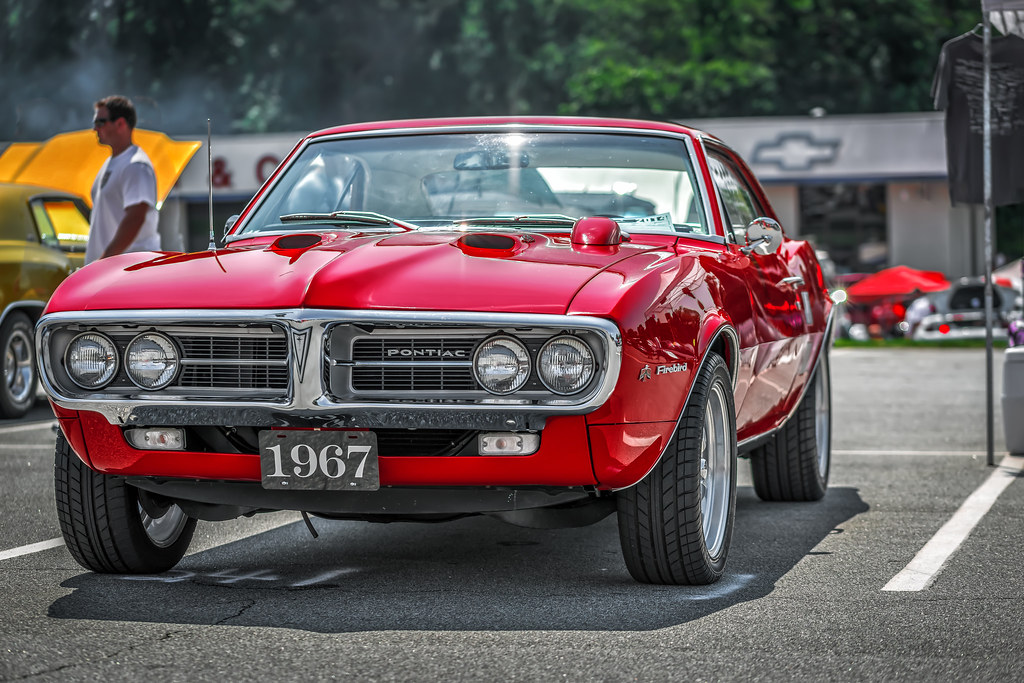
6. **The Fate of Garner’s Personal Firebird: From Set to Auction Block**Among the many Pontiac Firebirds used throughout the run of “The Rockford Files,” one particular 1978 example holds a special place in history, largely due to its post-series owner. This specific car, which had been outfitted for sound recording during production, was given to James Garner himself after the series concluded its successful run. It was a fitting memento for an actor whose personal passion so deeply influenced the show’s automotive star.
Garner, true to his nature as a car enthusiast, drove this Firebird until May 1981, further cementing its connection to him. After his ownership, the car embarked on a journey through the hands of a few different owners before eventually finding its way into the spotlight once more. Its journey reflects the deep affection fans and collectors hold for such culturally significant vehicles, especially those tied to beloved stars.
The car’s path to its fully restored condition is a testament to dedicated enthusiasts and experts. Hollywood car expert Steve Reich and Pontiac restoration guru Mike Flaherty played pivotal roles in bringing this piece of television history back to its camera-ready glory. Their efforts ensured that the Firebird not only survived but thrived, ready to be appreciated by new generations.
In 2019, this very Firebird, with its impeccable provenance and expert restoration, was offered for sale through the renowned auction house Barrett-Jackson. It commanded a significant price, selling for an impressive $115,000. This six-figure sale underscores the immense cultural and historical value of the car, demonstrating how a television prop, intertwined with the legacy of a star like James Garner, can become a highly prized collector’s item, cherished for its unique story and connection to a beloved era of television.
Car Model Information: 1983 Pontiac Firebird Trans Am 2D Coupe
Name: Pontiac Firebird
Caption: The second, third, and fourth generations of,the Pontiac Firebird Trans Am
Manufacturer: Pontiac (automobile)
Production: February 23, 1967 – August 30, 2002
ModelYears: 1967 – 2002
Class: Pony car,Muscle car
Platform: GM F platform
Related: Chevrolet Camaro
Layout: Front engine, rear-wheel-drive layout
Categories: 1970s cars, 1980s cars, 1990s cars, 2000s cars, All articles with dead external links
Summary: The Pontiac Firebird is an American automobile built and produced by Pontiac from the 1967 to 2002 model years. Designed as a pony car to compete with the Ford Mustang, it was introduced on February 23, 1967, five months after GM’s Chevrolet division’s platform-sharing Camaro. This also coincided with the release of the 1967 Mercury Cougar, Ford’s upscale, platform-sharing version of the Mustang.
The name “Firebird” was also previously used by GM for the General Motors Firebird series of concept cars in the 1950s.
Get more information about: Pontiac Firebird
Buying a high-performing used car >>>
Brand: Pontiac Model: Firebird
Price: $22,991 Mileage: 38,257 mi.
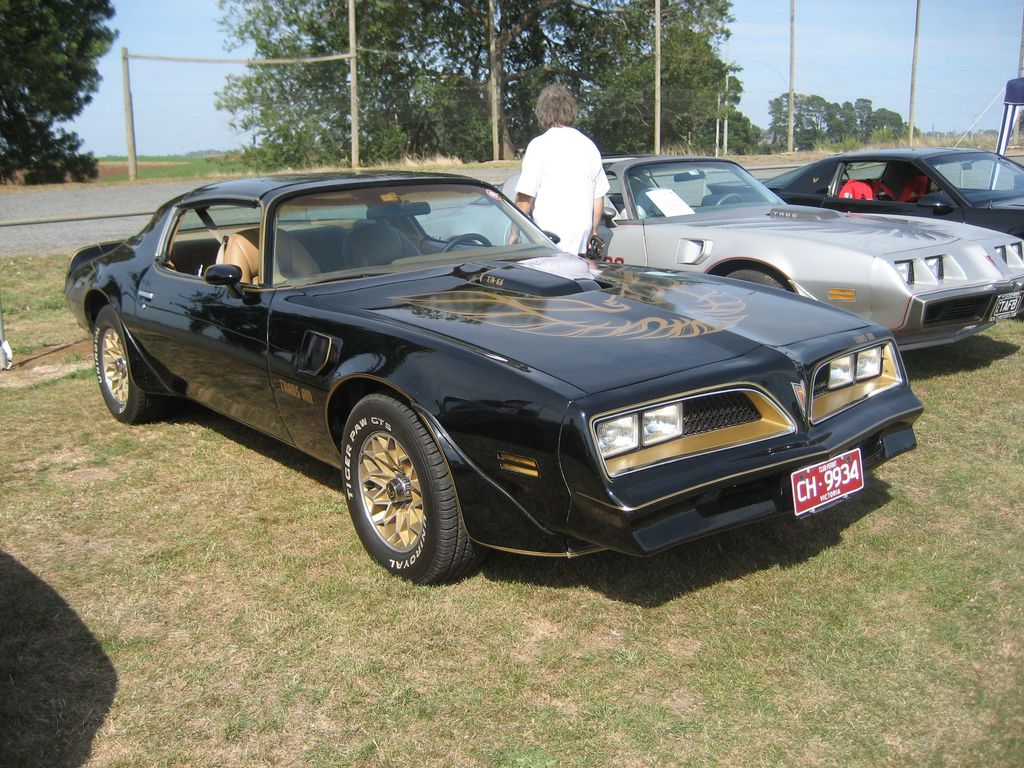
7. **The Signature Stunt: Jim Rockford’s Legendary ‘J-Turn’**While Jim Rockford’s Firebird might not have been known for the kind of wild, explosion-laden stunts synonymous with other famous TV cars, James Garner cultivated a signature move that became instantly recognizable and deeply embedded in popular culture: the “J-turn.” This seemingly simple maneuver, a trick borrowed from old moonshiners needing quick escapes, was perfected by Garner and transformed into Rockford’s iconic evasive action. It demonstrated a grounded, yet undeniably effective, driving prowess that perfectly suited the character.
The mechanics of the J-turn are deceptively straightforward, yet thrilling to behold. Garner would accelerate rapidly in reverse, then, with precise timing, execute a hard turn of the steering wheel while simultaneously pulling the emergency brake. This combination would send the Firebird into a controlled, tire-smoking 180-degree pivot, quickly changing the car’s direction to face forward, ready for a rapid getaway. This maneuver became so synonymous with the show that it is now famously known as ‘pulling a Rockford.’
Garner’s hands-on approach and exceptional driving skills were paramount in making the J-turn a believable and exciting part of the series. His ability to perform many of his own stunts, including this challenging maneuver, added an invaluable layer of realism and excitement to the action sequences. It underscored his dedication to authenticity and ensured that the driving portrayed on screen was as genuine as the character he embodied.
The J-turn wasn’t just a fancy trick; it was a character beat, reflecting Rockford’s resourceful nature and his frequent need for quick, unconventional solutions to tricky situations. It symbolized his ability to turn a disadvantage into an advantage, making it far more than just a stunt—it was a definitive element of Jim Rockford’s persona and a lasting contribution to television lore.
Car Model Information: 1983 Pontiac Firebird Trans Am 2D Coupe
Name: Pontiac Firebird
Caption: The second, third, and fourth generations of,the Pontiac Firebird Trans Am
Manufacturer: Pontiac (automobile)
Production: February 23, 1967 – August 30, 2002
ModelYears: 1967 – 2002
Class: Pony car,Muscle car
Platform: GM F platform
Related: Chevrolet Camaro
Layout: Front engine, rear-wheel-drive layout
Categories: 1970s cars, 1980s cars, 1990s cars, 2000s cars, All articles with dead external links
Summary: The Pontiac Firebird is an American automobile built and produced by Pontiac from the 1967 to 2002 model years. Designed as a pony car to compete with the Ford Mustang, it was introduced on February 23, 1967, five months after GM’s Chevrolet division’s platform-sharing Camaro. This also coincided with the release of the 1967 Mercury Cougar, Ford’s upscale, platform-sharing version of the Mustang.
The name “Firebird” was also previously used by GM for the General Motors Firebird series of concept cars in the 1950s.
Get more information about: Pontiac Firebird
Buying a high-performing used car >>>
Brand: Pontiac Model: Firebird
Price: $22,991 Mileage: 38,257 mi.

8. **Tracking and Restoring the Remaining Firebirds: A Fan’s Dedication**Given the demanding nature of television production, particularly for a show laden with car chases and stunts, many of the Pontiac Firebirds used in “The Rockford Files” met an inglorious end, often destroyed during filming. Others have simply passed through countless hands over the decades, making the task of tracking all the “dozen or two cars used for the series” nearly impossible. Yet, for dedicated enthusiasts, the quest to preserve these pieces of automotive and television history remains a passionate endeavor.
Among these devoted fans, Pat McKinney stands out. He proudly showcased his own 1977 Firebird specimen on an episode of “Jay Leno’s Garage,” offering a glimpse into the meticulous efforts required to bring a “Rockford car” back to its former glory. This was McKinney’s second such vehicle, a testament to his deep commitment, which he acquired on eBay in 1980 with a vision for its restoration.
McKinney’s journey to revive his Firebird was extensive, starting from a truly dilapidated state. He candidly shared with Leno the challenges he faced: “It was in terrible shape… Not a lot of rust, it’s just everything on it was just worn out… The suspension bushings were gone, the body [and] chassis bushings were gone, the interior was history.” His commitment led him to undertake a full teardown, a process that revealed fascinating production secrets.
During this painstaking restoration, McKinney “took it all the way down to the shell.” It was at this stage that he made a remarkable discovery: “that’s how I discovered the microphone plugs in the quarter panels and the fenders.” These hidden ports offered tangible evidence of the car’s on-screen history, likely used for capturing sound during filming. McKinney also shared insights into James Garner’s original Sierra Gold paint choice, suggesting it was inspired by a specific shade offered in the 1962 Cadillac lineup, further deepening the car’s unique backstory.
Car Model Information: 1983 Pontiac Firebird Trans Am 2D Coupe
Name: Pontiac Firebird
Caption: The second, third, and fourth generations of,the Pontiac Firebird Trans Am
Manufacturer: Pontiac (automobile)
Production: February 23, 1967 – August 30, 2002
ModelYears: 1967 – 2002
Class: Pony car,Muscle car
Platform: GM F platform
Related: Chevrolet Camaro
Layout: Front engine, rear-wheel-drive layout
Categories: 1970s cars, 1980s cars, 1990s cars, 2000s cars, All articles with dead external links
Summary: The Pontiac Firebird is an American automobile built and produced by Pontiac from the 1967 to 2002 model years. Designed as a pony car to compete with the Ford Mustang, it was introduced on February 23, 1967, five months after GM’s Chevrolet division’s platform-sharing Camaro. This also coincided with the release of the 1967 Mercury Cougar, Ford’s upscale, platform-sharing version of the Mustang.
The name “Firebird” was also previously used by GM for the General Motors Firebird series of concept cars in the 1950s.
Get more information about: Pontiac Firebird
Buying a high-performing used car >>>
Brand: Pontiac Model: Firebird
Price: $22,991 Mileage: 38,257 mi.

9. **Beyond the Firebird: The Rich Vehicular Tapestry of Los Angeles**While Jim Rockford’s gold Firebird justly holds its place as the automotive star of the series, “The Rockford Files” was also a veritable time capsule of mid-seventies automotive culture, offering a diverse array of vehicles that enriched its visual landscape. With so much location shooting throughout the bustling streets of Los Angeles, a wide variety of contemporary (and earlier) cars appeared in abundance in every single episode, subtly building out the world in which Rockford operated.
James Garner, being the passionate car guy he was, likely influenced Cherokee Productions to use specific cars as “incidental decoration,” elevating the background vehicles beyond mere set dressing. The opening credits themselves offered a recurring glimpse of an LAPD AMC Matador cop car, establishing a sense of realism. Beyond that, eagle-eyed viewers would often spot a ’63 Bullet Bird pulling frequent cameo duty, alongside a number of other distinctive automobiles that contributed to the authentic Los Angeles street scene.
The show’s production team was adept at populating its scenes with a consistent cast of background vehicles that might otherwise go unnoticed. What appeared to be everyday LA traffic frequently featured cars called upon for recurring appearances. This included a vibrant red Karmann Ghia, a sleek silver Audi 100, often seen positioned in front of a substantial Eldorado, and even a silver Vega. Even commercial vehicles like the GMC Fishbowl bus and the classic Ford Country Squire wagon may have been part of this uncredited, but vital, automotive ensemble.
Interestingly, some of these background cars possessed a certain “Central Casting” quality. For instance, while GMC fishbowls were indeed still in production in 1974, a particular bus featured on the show sported “an awfully shiny and un-dented front bumper that just reeks Central Casting,” suggesting it was a carefully chosen prop rather than a random vehicle. This meticulous attention to detail, even for fleeting background elements, enhanced the show’s immersive feel.
Indeed, a typical episode of “The Rockford Files” offered a veritable feast for automotive enthusiasts, showcasing a wide variety of vehicles that truly captured the essence of 1970s American streets. Beyond the recurring players, one might spot an agile Opel GT, a robust Buick station wagon, a classic ’65 Plymouth Fury sedan, a utilitarian Dodge Tradesman van, and a stylish ’64 Chevy Impala 4-door hardtop. Each episode was truly “eye candy” for anyone with an appreciation for vintage automobiles.
Car Model Information: 1983 Pontiac Firebird Trans Am 2D Coupe
Name: Pontiac Firebird
Caption: The second, third, and fourth generations of,the Pontiac Firebird Trans Am
Manufacturer: Pontiac (automobile)
Production: February 23, 1967 – August 30, 2002
ModelYears: 1967 – 2002
Class: Pony car,Muscle car
Platform: GM F platform
Related: Chevrolet Camaro
Layout: Front engine, rear-wheel-drive layout
Categories: 1970s cars, 1980s cars, 1990s cars, 2000s cars, All articles with dead external links
Summary: The Pontiac Firebird is an American automobile built and produced by Pontiac from the 1967 to 2002 model years. Designed as a pony car to compete with the Ford Mustang, it was introduced on February 23, 1967, five months after GM’s Chevrolet division’s platform-sharing Camaro. This also coincided with the release of the 1967 Mercury Cougar, Ford’s upscale, platform-sharing version of the Mustang.
The name “Firebird” was also previously used by GM for the General Motors Firebird series of concept cars in the 1950s.
Get more information about: Pontiac Firebird
Buying a high-performing used car >>>
Brand: Pontiac Model: Firebird
Price: $22,991 Mileage: 38,257 mi.
10. **The Villains’ Choice: Luxury Sedans and Unexpected Getaways**In stark contrast to Jim Rockford’s practical, understated Firebird Esprit, the vehicles driven by the antagonists in “The Rockford Files” often served as a clear visual indicator of their wealth, status, and often, their illicit endeavors. It was an unspoken rule that “The bad guys in Rockford generally drive Rolls Royces or Mercedes,” signaling a world of opulent excess that Jim Rockford, with his trailer-home office and budget-conscious lifestyle, could only occasionally brush against.
These luxury vehicles weren’t just fast cars; they were symbols of a lifestyle that was far removed from Rockford’s everyman existence. A pristine Rolls Royce or a commanding Mercedes-Benz instantly conveyed power and an air of untouchable sophistication, making the pursuit by Rockford’s comparatively modest Firebird all the more compelling. It highlighted the David vs. Goliath dynamic that was often at the heart of Rockford’s investigations.
While the classic European luxury cars were the usual suspects, the show occasionally surprised viewers with a deviation from this norm. In a rare instance, the baddie might be found “driving a big red Eldo,” showcasing an American take on automotive extravagance. This occasional departure added a touch of unexpected variety while still maintaining the theme of the antagonists’ opulent taste, ensuring their vehicles were always distinct from Rockford’s utilitarian, yet beloved, ride.

11. **The High Price of Action: Production Costs and Automotive Turnover**”The Rockford Files” was celebrated not just for its engaging narratives and charismatic lead, but also for its dynamic action sequences, particularly its car chases. However, this commitment to on-location shooting and practical stunts came with a significant price tag. The program “was said to have been very expensive to produce, both for its extensive use of location filming and probably for the large number of cars Rockford ran through” over its six-season run.
The production’s multi-car strategy, providing “hero,” “action,” and “damage” cars each year, was a necessary logistical framework for managing these high costs and the inevitable wear and tear. While the hero car was preserved, the action and damage cars bore the brunt of filming, often undergoing extreme duress. This constant rotation and replacement contributed significantly to the show’s overall budget, demonstrating the true cost of bringing thrilling automotive action to the small screen.
The continuous cycle of car destruction and replacement led to a running gag among observant fans, highlighting the seemingly miraculous resilience of Rockford’s Firebird. On screen, cars would often take punishing blows, only to appear pristine moments later. It was almost as if “Those Firebirds must have been extraordinary cars with the ability to self-heal running gear and body damage, sometimes within minutes,” a humorous nod to the seamless editing and the unsung automotive heroes behind the scenes.
Indeed, the sheer volume of vehicles consumed by the production underscored the raw demands of television stunt work in the 1970s. Each gravity-defying leap, each controlled crash, meant another vehicle potentially becoming “a steaming pile of junk once it lands,” as described in the context. This constant turnover of automotive resources was a fundamental, if expensive, reality of creating the believable, yet thrilling, car action that defined the series.

12. **Hollywood Magic: The Physics-Defying Car Chases of Television**Car chases in Hollywood productions often operate under a delightful set of rules that subtly defy the laws of physics, and “The Rockford Files” was no exception to this grand tradition. It almost feels like “an unwritten rule in Hollywood that car chases must include plenty of gravity-defying leaps,” sending vehicles soaring through the air in spectacular fashion, even if the subsequent landing might, in reality, render them completely inoperable.
This cinematic liberty raises a fascinating question for the curious viewer: how do they pull it off? “Of course, the car is always shown driving off into the sunset, which makes one wonder. Did they use two identical cars or did they film the post-jump scenes first?” The answer often lies in a sophisticated blend of clever editing, pre-shot sequences, and the strategic use of multiple vehicles for different stages of a stunt, as exemplified by the show’s “hero,” “action,” and “damage” car strategy.
The reality of such audacious stunts is, of course, far more brutal than their on-screen portrayal. The vehicle “shown in mid-air shortly will become a steaming pile of junk once it lands,” a testament to the disposable nature of the “damage car” category. This stark contrast between the cinematic illusion and the practical consequence is a hallmark of television car chases, allowing for thrilling visuals without dwelling on the immediate aftermath.
Beyond the big jumps, the series also offered a unique kind of charm in its less glamorous automotive depictions. There’s a particular shot that captured a sense of ironic delight: “I love this shot—two of the worst cars ever made, a Vega and an Audi 100 LS. What are the odds that both of these excresences could be kept running long enough to complete a scene? Boggles the mind.” It’s these candid, sometimes humorous, observations that further cement the show’s realistic yet imaginative approach to its automotive elements, providing “eye candy in every episode” in unexpected ways.
From the iconic J-turn to the meticulous selection of every vehicle on screen, “The Rockford Files” proved that a car could be more than just transportation; it could be a character, a statement, and a piece of cultural history. James Garner’s discerning eye and genuine passion for automobiles elevated the gold Firebird Esprit from a mere prop to an enduring symbol of a beloved era in television. Its journey, from humble beginnings to a prized collector’s item, reflects the show’s lasting impact and the deep connection audiences formed with Jim Rockford and his unforgettable ride. The stories behind these cars, much like Rockford’s own investigations, continue to reveal fascinating layers, inviting us to look closer at the magic that made “The Rockford Files” a timeless classic.




